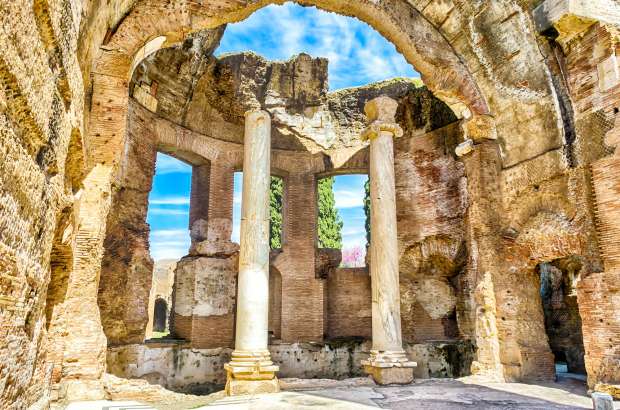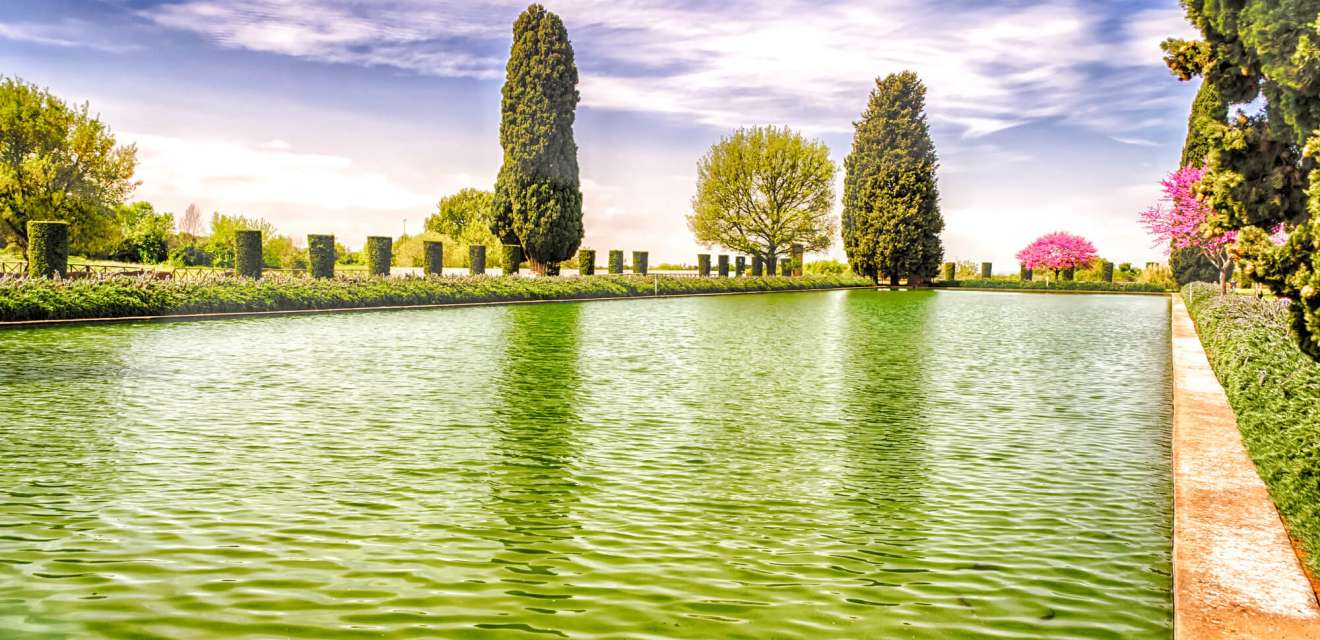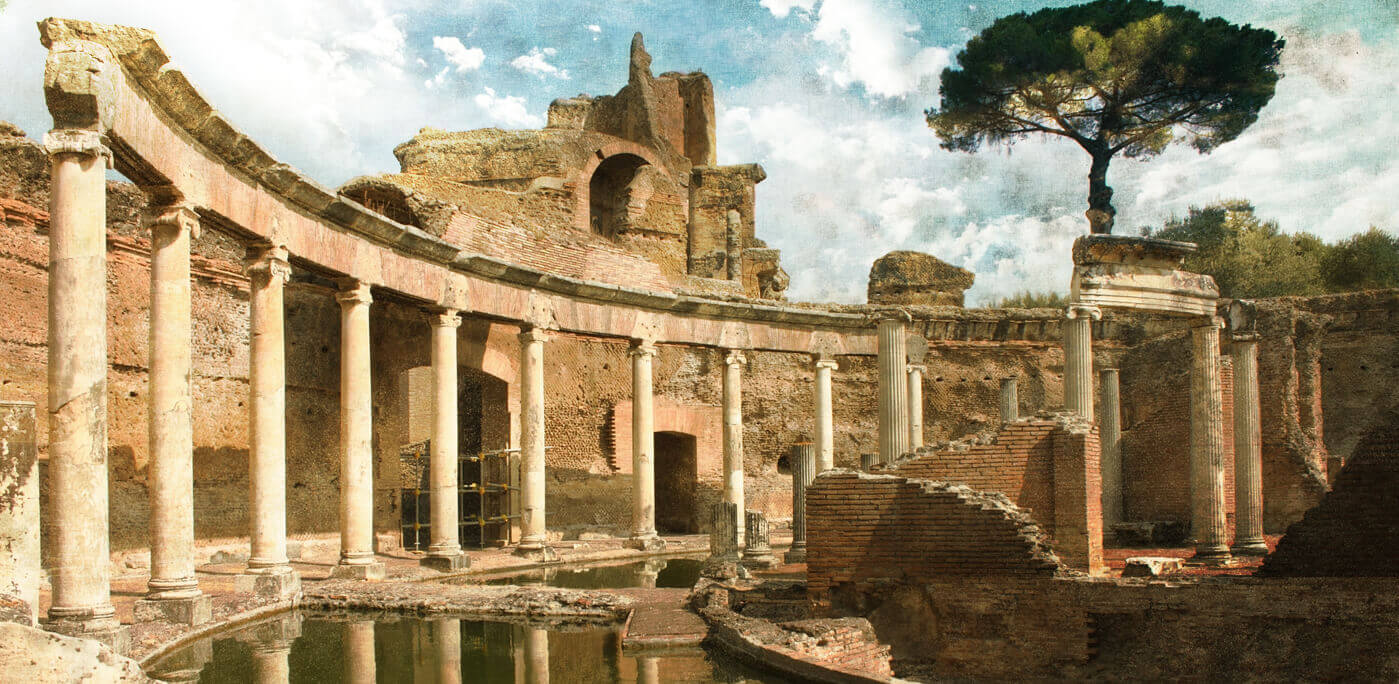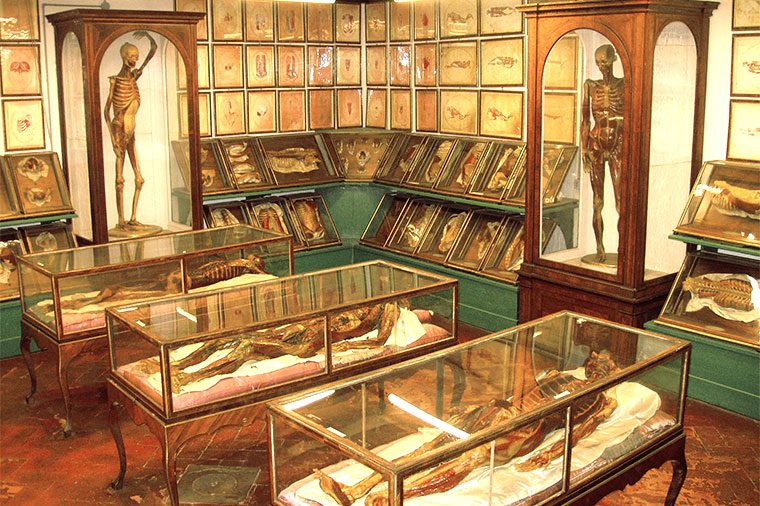Most Roman emperors liked to get out of Rome every now and then. Julius Caesar, Nero and Caligula favoured Baiae in Campania, enjoying its mild climate, thermal baths, and, in Nero’s case, opportunities for matricide. Fearing assassination, Tiberius left Rome altogether and relocated to Villa Jovis on the island of Capri, where he indulged in debauchery and had people thrown to their deaths from the clifftop.
Closer to Rome, Hadrian retreated to his luxurious villa in Tivoli. Although the name “Hadrian’s Villa” may make you picture a house, this villa was far more than a single building. When it was originally built, it was a vast, sprawling estate that included a palace, an art gallery, theatres, gardens, pools and fountains. There was even an island, the site of a small house which included a library and baths.
Even today, the ruins of Hadrian’s Villa resemble a small city, rather than a private residence. A visit to the villa is a unique experience to roam through the remains of an emperor’s villa, gaining an insight into Hadrian’s world.
The most famous – and photographed – part of Hadrian’s Villa is known as the Canopus. This large artificial lake represents a branch of the River Nile and is surrounded by arcades and statues of Amazons. As a venue for banquets and dinner parties, it’s hard to imagine a more spectacular setting, but this was just one of many pools on the estate. Using a team of architects, gardeners and slaves, Hadrian made his fantasy of a grand rural retreat a reality. In terms of ambition, the only surviving imperial residence that comes close is Nero’s extravagant pleasure palace, the Domus Aurea in Rome.

While the archaeological site is impressive in itself, a visit to Hadrian’s Villa is undoubtedly enriched by the company of a tour guide, or at least a good guidebook, so you know exactly what you’re looking at. Otherwise, a visit to Hadrian’s Villa can be a slightly disorientating experience, as you wander through the grounds, past enormous walls and rows of statues. Exploring the remains of the art gallery becomes even more awe-inspiring when you discover the extent of the original collection – more than five hundred pieces of statuary have been unearthed here.
It doesn’t take much imagination to picture how luxurious the villa must have been when Hadrian lived here, and it’s easy to understand why the emperor preferred the tranquillity of his country home to the chaos of Rome. This was where Hadrian came to relax, write and study, and towards the end of his reign, he even began to govern the Roman Empire from Tivoli.

The French writer Marguerite Yourcenar was inspired not only by the life of Hadrian, but also by his villa. In 1924, at the age of 21, she visited Hadrian’s Villa and decided to write a novel about the emperor. It wasn’t until 1954 that the novel was finally completed and published as Memoirs of Hadrian. Considering that Hadrian’s autobiography has been lost, Yourcenar’s meticulously researched novel is the closest thing we have to the voice of the emperor. It’s essential reading for anyone planning a visit to Hadrian’s Villa, and a testament to the remarkable atmosphere of the archaeological site, which continues to intrigue and inspire its visitors.
Hadrian’s Villa and Tivoli are easily reached on a day trip from Rome, and there are regular buses (from Ponte Mammolo) and trains (from Tiburtina).
Alexandra Turney works for Through Eternity Tours, which offers private tours of Tivoli, including Hadrian’s Villa and Villa D’Este






























